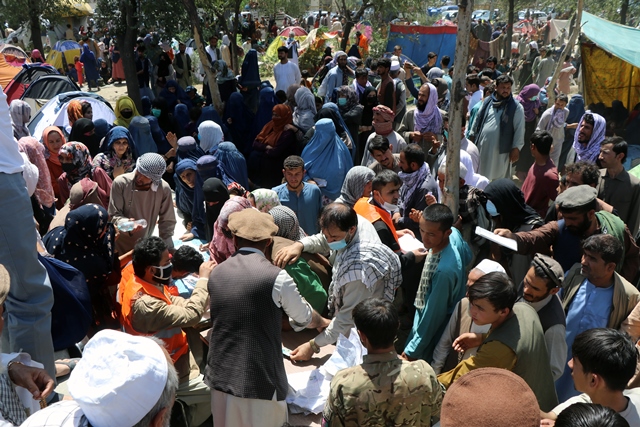KABUL (Pajhwok): Over 13,000 Internally Displaced Persons (IDPs) have arrived in capital Kabul and other major cities from July 01 to August 13 seeking safety from the conflict and other threats, according to a statement on Saturday.
Many of these people arrived from the north, southwest and southeast, and more recently from Wardak and Ghazni provinces. IDPs are either renting or being hosted by friends, family and other kinship ties. A growing number are also staying in the open in different parts of the city.
As of 13 August, the Government completed the relocation of 8,400 IDPs from Shahr-e-Now park in PD 10 and PD 11 to Pir Mohamad Kakar High School in PD 7 and a Government building in Dehsabz district.
HUMANITARIAN RESPONSE
Between twenty and twenty-five inter-agency assessment teams are presently deployed and are verifying IDPs and their humanitarian needs. The number of assessment teams has doubled in two days while more partners continue to join in.
People’s immediate needs are shelter, food, sanitation and drinking water and humanitarian partners are providing support. As of 13 August, humanitarian partners provided food, cash, household items, health and water and sanitation assistance to more than 6,600 people in Kabul today (13 August) alone, bringing the total number of people reached with multi-sector assistance to 13,500 IDPs.
COORDINATION
The Humanitarian Community is working closely with the Government and municipal authorities in Kabul to plan the response and ensure people are provided with the most dignified living conditions. The Operational Coordination Team (OCT) is meeting daily and chaired by OCHA, with the presence of Department of Refugee and Repatriation (DoRR), Provincial Disaster Management Authority (PDMA) and humanitarian partners. From the Government’s side, a coordination cell has also been established to coordinate and monitor the distribution of assistance (food and household items from private sources – charity organisations, civil societies and individuals).
Partners are further planning to set up stations along the four main entry points into the city to enable tracking of population inflows.
nh








GET IN TOUCH
NEWSLETTER
SUGGEST A STORY
PAJHWOK MOBILE APP